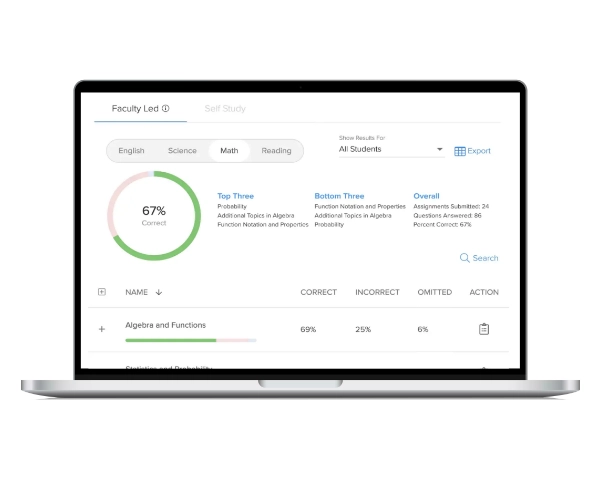More than two decades ago, the Institute of Medicine (IOM) grabbed the attention of healthcare workers and the general public with the release of reports highlighting the tens of thousands of preventable deaths caused by medical errors each year. (IOM Reports - To Err Is Human: Building a Safer Health System, and the follow-up report, Crossing the Quality Chasm). Because nurses make up the majority of the healthcare workforce in the United States, nurses and nurse educators knew that a meaningful response was needed. In response, educators from the University of North Carolina Chapel Hill School of Nursing and other colleges across the United States created the Quality and Safety Education for Nurses (QSEN) competencies in 2005.
What Is the Goal of the QSEN?
The overall goal of the QSEN initiative is to meet the challenge of preparing future nurses with the knowledge, skills, and attitudes (KSAs) necessary to continuously improve the healthcare systems within which they work. The attainment of this goal begins with integrating contemporary quality and safety content into nursing education. QSEN leaders partnered with the AACN (American Association of Colleges of Nursing) from 2008 to 2012 to ensure the QSEN competencies were integrated into the appropriate references (textbooks, licensing, accreditation, and certification standards) and to develop faculty training.
What Are the Six QSEN Competencies?
QSEN has six competencies with KSA’s for each competency. Listed below are the competencies with a few examples of the knowledge, skills, and attitudes for each competency.
“Recognize the patient or designee as the source of control and full partner in providing compassionate and coordinated care based on respect for the patient’s preferences, values, and needs.”
- Describe how diverse cultural, ethnic, and social backgrounds function as sources of patient, family, and community values
- Explore ethical and legal implications of patient-centered care
- Discuss principles of effective communication
- Engage patients or designated surrogates in active partnerships that promote health, safety, well-being, and self-care management
- Recognize the boundaries of therapeutic relationships
- Facilitate informed patient consent for care
- Value the patient’s expertise with own health and symptoms
- Seek learning opportunities with patients who represent all aspects of human diversity
“Function effectively within nursing and inter-professional teams, fostering open communication, mutual respect, and shared decision-making to achieve quality patient care.”
- Analyze differences in communication style preferences among patients and families, nurses, and other members of the health team
- Describe impact of own communication style on others
- Discuss effective strategies for communicating and resolving conflict
- Communicate with team members, adapting own style of communicating to needs of the team and situation
- Demonstrate commitment to team goals
- Initiate actions to resolve conflict
- Acknowledge own potential to contribute to effective team functioning
- Appreciate importance of intra- and inter-professional collaboration
“Integrate best current evidence with clinical expertise and patient/family preferences and values for delivery of optimal health care.”
- Differentiate clinical opinion from research and evidence summaries
- Explain the role of evidence in determining best clinical practice
- Demonstrate knowledge of basic scientific methods and processes
- Base individualized care plan on patient values, clinical expertise, and evidence
- Read original research and evidence reports related to area of practice
- Question rationale for routine approaches to care that result in poor outcomes or adverse events
- Value the concept of EBP as integral to determining best clinical practice
- Appreciate the importance of regularly reading relevant professional journals
“Use data to monitor the outcomes of care processes and use improvement methods to design and test changes to continuously improve the quality and safety of health care systems.”
- Recognize that nursing and other health professions students are parts of systems of care and care processes that affect outcomes for patients and families
- Describe approaches for changing processes of care
- Use tools (such as flow charts, cause-effect diagrams) to make processes of care explicit
- Participate in a root cause analysis of a sentinel event
- Design a small test of change in daily work (such as implementing Plan-Do-Study-Act)
- Appreciate that continuous quality improvement is an essential part of the daily work of all health professionals
- Value own and others’ contributions to outcomes of care in local care settings
- Appreciate how unwanted variation affects care
“Minimizes risk of harm to patients and providers through both system effectiveness and individual performance.”
- Examine human factors and other basic safety design principles as well as commonly used unsafe practices
- Discuss potential and actual impact of national patient safety resources, initiatives, and regulations
- Demonstrate effective use of strategies to reduce risk of harm to self or others
- Communicate observations or concerns related to hazards and errors to patients, families, and the health care team
- Use organizational error reporting systems for near misses and error reporting
- Appreciate the cognitive and physical limits of human performance
- Value own role in preventing errors
- Value relationship between national safety campaigns and implementation in local practices and practice settings
“Use information and technology to communicate, manage knowledge, mitigate error, and support decision making.”
- Describe examples of how technology and information management are related to the quality and safety of patient care
- Recognize the time, effort, and skill required for computers, databases, and other technologies to become reliable and effective tools for patient care
- Navigate the electronic health record
- Respond appropriately to clinical decision-making supports and alerts
- Use information management tools to monitor outcomes of care processes
- Appreciate the necessity for all health professionals to seek lifelong, continuous learning of information technology skills
- Value technologies that support clinical decision-making, error prevention, and care coordination
The Alignment of the QSEN Competencies to the New AACN Essentials
QSEN remains relevant today because the provision of safe and quality healthcare remains the foundation of all healthcare and healthcare training institutions. QSEN strives to continue the initiatives for safety and quality within nursing education and nursing care. The alignment of QSEN with the new 2021 AACN Essentials validates QSEN’s continued relevance.
AACN essentials topics and concepts
The AACN Essentials were revised to reflect the constant changes in healthcare including in technology and informatics; shifts in the population demographics; updates to health policy; and other generational topics such as health inequality and global pandemics. As society evolves and healthcare changes, nursing academics have an obligation to evolve and change in order to adequately prepare the nursing workforce. The inclusion of the AACN essentials into nursing curricula establishes a reliable foundation for the education of the future nursing workforce and provides an organizational framework that assures that no necessary concepts are omitted.
One key change of the AACN Essentials is that all programs are placed in one of two categories - entry-level and advanced-level nursing. For purposes of this article, we are discussing entry-level, specifically, baccalaureate level nursing. The Essentials provides a competency-based framework for the evaluation of a baccalaureate nursing program. The framework is made up of 10 Domains and Eight Essential Concepts that cover the broad profession of nursing practice. Each of the QSEN competencies has been included in the AACN Domains and Concepts (as indicated with the highlighting below). AACN provides a crosswalk for comparing and contrasting the QSEN AND AACN competencies.
Competencies
Essential Domains
How to Incorporate QSEN and AACN into Nursing Curriculum
Integration into the nursing curriculum is made easy with the KSA’s. The Essential’s competency statements provide the knowledge, skills, and attitudes that should be assessed and evaluated in the learner. The statements can and should be used as objectives for your courses and program. Teaching and learning strategies should align with the competency statements and allow the learner to demonstrate competency over time.
There are many implementation resources provided by AACN. What does this all mean for nursing education in the near future? I think this is the question most of us are asking ourselves. We are probably also thinking about how Next Generation NCLEX plays into this. Here are a few considerations to summarize:
- Because the AACN Essentials are competency-based, they are more aligned with clinical judgment and the Next Generation NCLEX. Incorporating the Essentials means incorporating student-centered pedagogy and formative assessment and providing varied situations and contexts for learning. These elements are critical to the development of clinical judgment.
- QSEN is a widely used framework in nursing curricula and is aligned with the new Essentials. There is no need to revise or delete QSEN if it is being used in your nursing program. You will note, however, that the Essentials is a broader framework than QSEN so if you are using QSEN, you are most likely also using some other frameworks.
- The Essentials, if implemented and utilized appropriately and fully, can provide your nursing curricula with a valid framework for assessment and evaluation of your students and your program. (Visit the AACN website, listed in the references, to read about all the changes to the Essentials.)
- Finally, utilize a product like UWorld Nursing Platform that has robust reporting to demonstrate that you are evaluating the knowledge and skills of the Essentials and/or QSEN. This will make you and your accreditors happy!
References
Giddens, J., Douglas, J.P. & Conroy, S. (2022). The Revised AACN Essentials: Implications for Nursing Regulation. Journal of Nursing Regulation, 12(40, 16-22. doi.org/10.1016/S2155-8256(22)00009-6
https://www.aacnnursing.org/AACN-Essentials
https://qsen.org/competencies/pre-licensure-ksas/
Kavanagh, J. & Sharpnack, P. (2021) Crisis in competency: A defining moment in nursing education.
OJIN : The Online Journal of Issues in Nursing, 26(1), Manuscript 2. Accessible online at https://www.doi.org/10.3912/OJIN.Vol26No01Man02
Tongyao Wang, T. , Nelson, Y. M., Alexander, F. Dolansky, M. A. (2022) Future Direction of Quality and Safety Competency-Based Education: Quality and Safety Education for Nurses Teaching Strategies.
Journal of Nursing Education. Online June, 1, 2022. https://doi.org/10.3928/01484834-20220510-01





